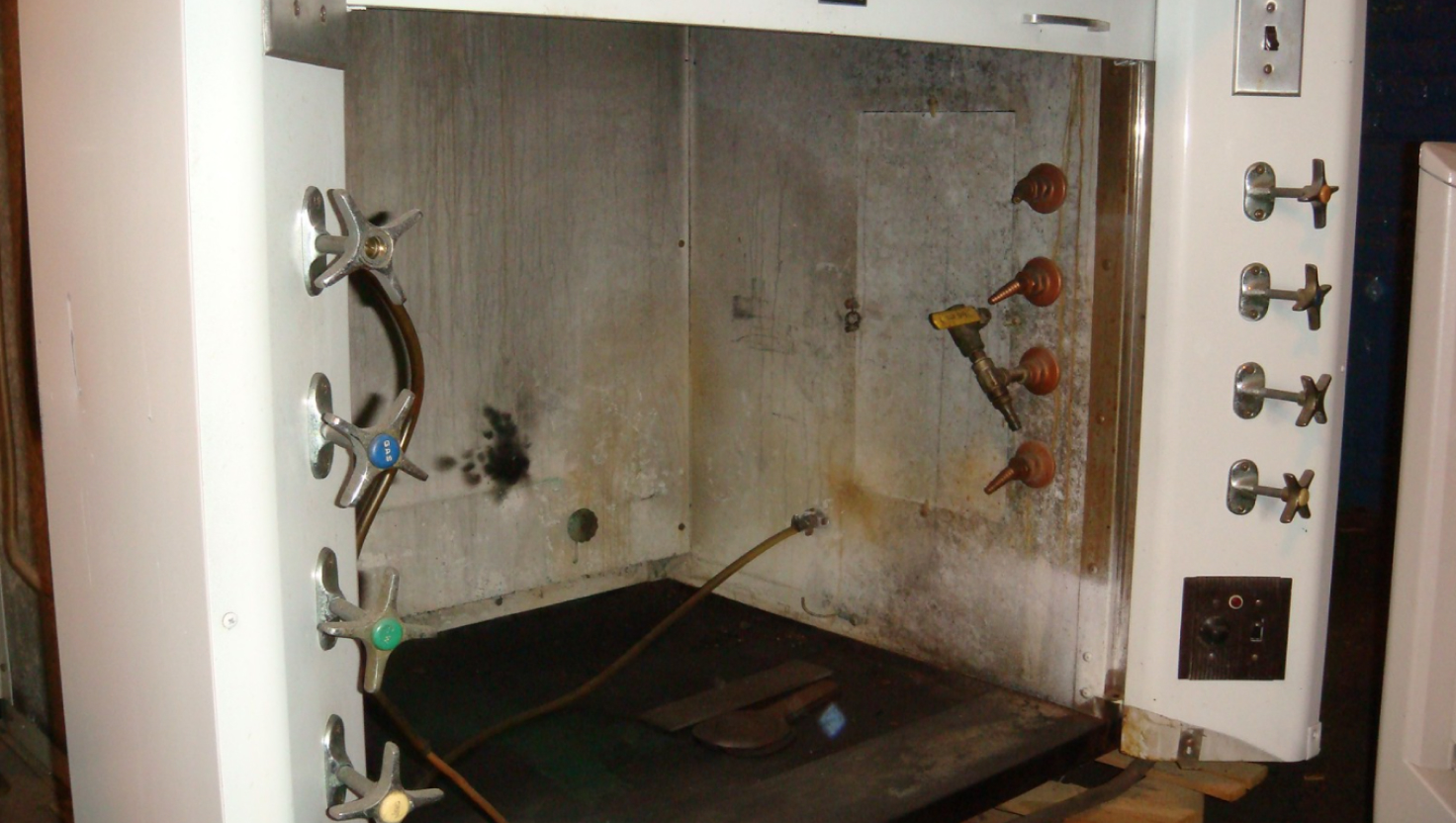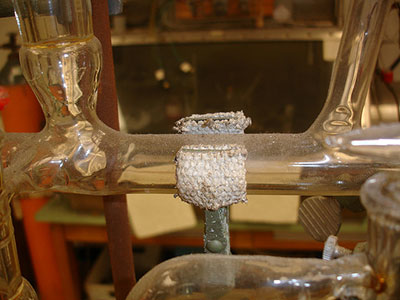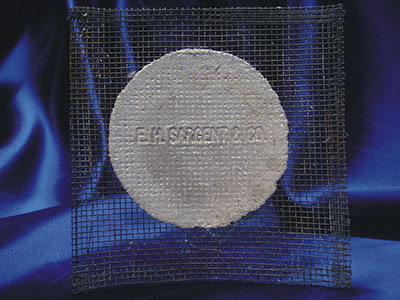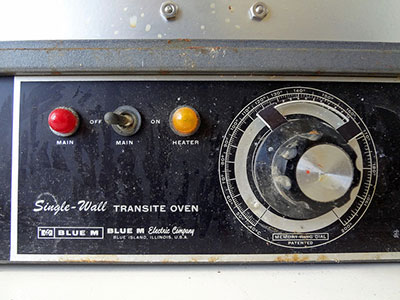Get Your Free Mesothelioma Guide

Find a Top Mesothelioma Doctor

Access Help Paying for Treatment

Asbestos was once common in laboratory equipment, from gloves to safety mats, because of its resistance to heat and chemical corrosion. Though most lab equipment is no longer manufactured with the toxic mineral, asbestos-containing fume hood linings remain in many laboratories throughout the country.

For most of the 20th century, asbestos was thought to be indispensable to the modern science laboratory. The mineral has a soft, fibrous consistency that allows it to be woven into fabric and easily mixed into other substances. Yet on a microscopic level, asbestos fibers are almost indestructible, resisting heat, chemical corrosion and electricity.
Unfortunately, generations of researchers, professors and students relied on asbestos to keep them safe before the mineral’s cancer-causing effects became public knowledge. In the past, it was common for worn asbestos laboratory equipment to release asbestos dust, putting everyone in the lab at risk of harmful exposure.
Today, there is still a risk of laboratory asbestos exposure whenever older transite-lined fume hoods are damaged or removed. Any fume hood made before 1988 may contain asbestos. Other older laboratory materials, such as gloves, mats and countertops, may contain asbestos and should be tested to determine if they are contaminated. New versions of these laboratory supplies are no longer made with asbestos in the U.S., but international manufacturers may still use asbestos. There are no regulations to prevent asbestos-containing lab equipment from entering the U.S.

Fireproof Gloves, Mitts and Sleeves
Asbestos fibers were woven into gloves, mitts and sleeves as well as protective coverings for tongs, clamps and other tools.

Bunsen Burner Mats and Gauze Pads
Bunsen burners create a gas flame to quickly heat laboratory samples. Asbestos was used in the gauze pads that support samples above the flame, as well as the safety mats placed below the burners. These products were also called asbestos mat boards, asbestos chemistry pads or simply asbestos sheets.

Equipment Insulation Linings
Laboratory machines, such as ovens and centrifuges, sometimes included asbestos as an internal insulating material. Pure asbestos fibers were also used to filter strong chemicals that would corrode any other kind of thin filter fibers.
Laboratory Fume Hoods
A fume hood is a storage unit for dangerous chemicals that uses a ventilation system to draw chemical fumes away from laboratory workers. Many older fume hoods are lined with a type of asbestos cement known as transite.
Countertops
Some laboratory countertops were made of asbestos cement because this material is unlikely to react to chemicals and is resistant to heat and fire.
Get Your Free Mesothelioma Guide

Find a Top Mesothelioma Doctor

Access Help Paying for Treatment

Asbestos-related diseases are caused by the accumulation of microscopic asbestos fibers in the body, usually in and around the lungs. Because the mineral has no scent or taste, a person can easily inhale asbestos dust without realizing it.
According to a 2022 report by the European Commission, over 70,000 workers died in 2019 from past exposure to asbestos.
Asbestos in laboratory equipment is known to cause the following diseases:
The level of exposure risk associated with an asbestos-containing material depends on whether the material is friable or nonfriable. A friable material can be crumbled by hand pressure, producing fine dust and debris. In decades past, asbestos gloves, mats and gauze pads often became friable through age and use, exposing many researchers, science teachers, students and workers to inhalable asbestos dust.
If you are diagnosed with an asbestos-related disease it is important to seek medical care from a doctor who specializes in your diagnosis. Treating these diseases early is important to long-term survival, and specialists can help you access innovative treatments.
Lawsuits against manufacturers of asbestos-containing laboratory equipment, including Fisher Scientific, have revealed the companies were aware of the dangers of asbestos but decided to use the material regardless. An internal memo produced by employees at Fisher Scientific in 1977 said they should begin to phase out asbestos. It said the material would soon be unmarketable because of growing public knowledge of the dangers of asbestos.
An experienced mesothelioma lawyer can review your case to advise you on the types of legal claims you may qualify to file. In addition to personal injury lawsuits and wrongful death lawsuits, you may qualify to file multiple claims with asbestos trust funds.
Other forms of compensation include VA claims, Social Security Disability, workers’ compensation and treatment and travel grants.

We have more than 50 years of combined experience helping mesothelioma patients.
Chat NowThe transite linings that remain in some old laboratory fume hoods are generally not considered friable, but asbestos-contaminated dust can still be released if the hood linings are damaged, cut or drilled into. As with all asbestos-containing materials, any work affecting transite fume hood linings should be left to licensed asbestos abatement professionals.
If you are suspicious that other laboratory equipment may contain asbestos, call an asbestos abatement company for their professional opinion. They can test the material to see if it contains asbestos, and can safely remove and dispose of the product.
As the health hazards of asbestos exposure came to light in the 1970s and 1980s, the use of asbestos was phased out in the manufacture of laboratory equipment. However, older research laboratories still commonly contain asbestos cement products such as countertops and fume hood linings, as well as machinery with internal asbestos insulation.
The following prominent universities have published safety guidelines concerning asbestos materials in laboratories and other places on campus:
These safety guidelines advise students, teachers, professors and lab workers to not disturb any material they suspect contains asbestos. They recommend informing the school of any suspicious material that seems damaged so it can be safely abated by a licensed professional.
Transite was originally the brand name for a product the Johns Manville Corporation introduced in 1929, but over time the word came to be used generically to refer to any similar asbestos cement product.
In 1936, the Labconco Corporation unveiled the first commercially available fume hood. Until this point, chemists throughout history relied on less sophisticated ways of protecting themselves from chemical fumes and often were poisoned by their research materials as a result. The invention of the fume hood represented a leap forward in laboratory safety, but it suffered an unfortunate step back when transite became a common lining for fume hoods.
In the first half of the 1900s, asbestos had a reputation for making products safer and more durable, and laboratory researchers proved just as enthusiastic about safety as architects and shipbuilders. Bunsen burners were already well established in science laboratories, and asbestos-containing accessories and protective gear quickly became just as widespread.
At the turn of the 20th century, the acceleration of scientific advancement in chemistry and physics created a growing demand for modern laboratory equipment. Chester Garfield Fisher was one of the early entrepreneurs to respond to this need, founding the Fisher Scientific Company in 1902. Fisher Scientific became an industry leader in the making of laboratory equipment, and like numerous manufacturing companies of the time period, it used asbestos in many of its products.
Recommended ReadingYour web browser is no longer supported by Microsoft. Update your browser for more security, speed and compatibility.
If you are looking for mesothelioma support, please contact our Patient Advocates at (855) 404-4592
The Mesothelioma Center at Asbestos.com has provided patients and their loved ones the most updated and reliable information on mesothelioma and asbestos exposure since 2006.
Our team of Patient Advocates includes a medical doctor, a registered nurse, health services administrators, veterans, VA-accredited Claims Agents, an oncology patient navigator and hospice care expert. Their combined expertise means we help any mesothelioma patient or loved one through every step of their cancer journey.
More than 30 contributors, including mesothelioma doctors, survivors, health care professionals and other experts, have peer-reviewed our website and written unique research-driven articles to ensure you get the highest-quality medical and health information.
My family has only the highest compliment for the assistance and support that we received from The Mesothelioma Center. This is a staff of compassionate and knowledgeable individuals who respect what your family is experiencing and who go the extra mile to make an unfortunate diagnosis less stressful. Information and assistance were provided by The Mesothelioma Center at no cost to our family.LashawnMesothelioma patient’s daughter


Whitmer, M. (2025, January 13). Asbestos in Laboratory Equipment & Fume Hoods. Asbestos.com. Retrieved April 24, 2025, from https://www.asbestos.com/products/fume-hoods/
Whitmer, Michelle. "Asbestos in Laboratory Equipment & Fume Hoods." Asbestos.com, 13 Jan 2025, https://www.asbestos.com/products/fume-hoods/.
Whitmer, Michelle. "Asbestos in Laboratory Equipment & Fume Hoods." Asbestos.com. Last modified January 13, 2025. https://www.asbestos.com/products/fume-hoods/.
An occupational scientist or another expert who specializes in occupational hazards reviewed the content on this page to ensure it meets current scientific standards and accuracy.
Sean Fitzgerald, PG, is a research geologist specializing in asbestos environmental studies.
Our fact-checking process begins with a thorough review of all sources to ensure they are high quality. Then we cross-check the facts with original medical or scientific reports published by those sources, or we validate the facts with reputable news organizations, medical and scientific experts and other health experts. Each page includes all sources for full transparency.
Please read our editorial guidelines to learn more about our content creation and review process.
